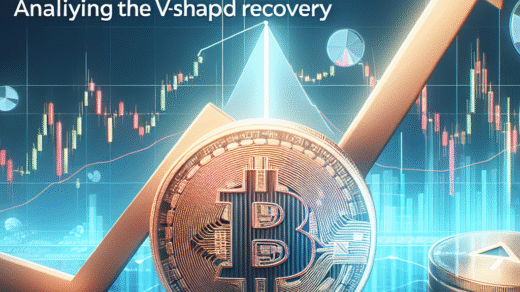Understanding the Risks Behind the Surge of Tokenized Funds: Insights from Moody’s
The world of cryptocurrency is rapidly evolving, with tokenization of funds emerging as a significant trend. However, as highlighted in a recent report by Moody’s Ratings, the explosive growth of tokenized funds brings with it a host of risks that investors must carefully consider. This article will delve into these risks and the implications for investors navigating this burgeoning market.
The Tokenization Boom: A Brief Overview
Tokenization refers to the process of converting rights to an asset into a digital token on a blockchain. This innovative approach has gained traction among major financial institutions, with players like BlackRock and Franklin Templeton leading the charge. According to data from rwa.xyz, tokenized money market funds alone have skyrocketed by approximately 350% within a year, achieving a market capitalization of $5.2 billion. This staggering growth signals the increasing interest in tokenized assets.
Weighing the Benefits Against the Risks
While the advantages of tokenized funds include enhanced accessibility and transparency, investors must also remain vigilant about the accompanying risks. Cristiano Ventricelli, VP-senior analyst at Moody’s Ratings, emphasizes the importance of evaluating both sides of the equation. The risks associated with tokenized funds can be broadly categorized into technology vulnerabilities, governance challenges, and regulatory uncertainties.
Key Risks Associated with Tokenized Funds
1. Technology Vulnerabilities
One of the primary concerns highlighted by Moody’s is the limited experience of many fund managers in the tokenization space. With many teams being small and having short track records, the reliance on key individuals creates a potential key-man risk. If a crucial executive departs or if governance structures are weak, the fund’s stability may be jeopardized.
Moreover, while smart contracts can streamline fund operations, they are not immune to coding flaws or malicious attacks. The use of public, permissionless blockchains enhances accessibility but simultaneously increases exposure to potential security exploits. To mitigate these risks, Moody’s recommends implementing off-chain backups and conducting thorough smart contract audits.
2. Fragile Redemption Mechanisms
Redemption mechanisms are critical for investors wishing to cash out their holdings. However, these mechanisms can be fragile and susceptible to market fluctuations. Moody’s advocates for tokenized funds to support redemptions in both stablecoins and fiat currency. This dual approach can serve as a safeguard against potential events such as stablecoin depegs or blockchain outages, providing a more stable exit strategy for investors.
3. Regulatory Landscape Challenges
The regulatory environment surrounding tokenized funds is complex and varies significantly across jurisdictions. This patchwork of regulations poses risks for investors, as claims made by token holders may face legal obstacles. Although some funds are structured to provide token holders with direct claims on underlying assets, the enforceability of these claims is contingent upon local laws and the robustness of fund documentation.
Best Practices for Investors in Tokenized Funds
Given the potential risks associated with tokenized funds, investors must adopt a cautious approach. Here are some best practices to consider:
1. Conduct Thorough Due Diligence
Before investing in tokenized funds, conduct comprehensive research on the fund’s management team, governance structures, and underlying assets. Look for funds that have established risk management practices and a solid operational history.
2. Understand the Technology
Familiarize yourself with the underlying technology of tokenized funds. Understand how smart contracts operate, as well as the blockchain used by the fund. This knowledge will help you assess the risks associated with technology vulnerabilities.
3. Diversify Investments
Just as with traditional investments, diversification is key to mitigating risk. Consider spreading your investments across multiple tokenized funds to minimize the impact of any single fund’s performance on your overall portfolio.
4. Stay Informed on Regulatory Changes
The regulatory landscape for cryptocurrency and tokenized assets is continually evolving. Stay informed about changes in regulations that may impact your investments. Engaging with legal experts or financial advisors can provide valuable insights.
The Future of Tokenized Funds
As the market for tokenized funds continues to develop, it is crucial for investors to navigate this landscape with caution. While the opportunities for growth are substantial, the associated risks require careful consideration and proactive management. By staying informed and adhering to best practices, investors can position themselves to take advantage of the benefits offered by tokenization while minimizing potential pitfalls.
Conclusion
In summary, the rapid growth of tokenized funds presents both exciting opportunities and substantial risks. Moody’s Ratings has underscored the importance of understanding these risks, from technology vulnerabilities to regulatory challenges. By employing diligent research and risk management strategies, investors can successfully navigate this evolving landscape. As with any investment in the cryptocurrency space, knowledge and caution are essential for achieving long-term success.
For further information on cryptocurrency investments, including how to buy popular digital assets like Bitcoin, Ethereum, and XRP, explore our comprehensive guides and reviews.







